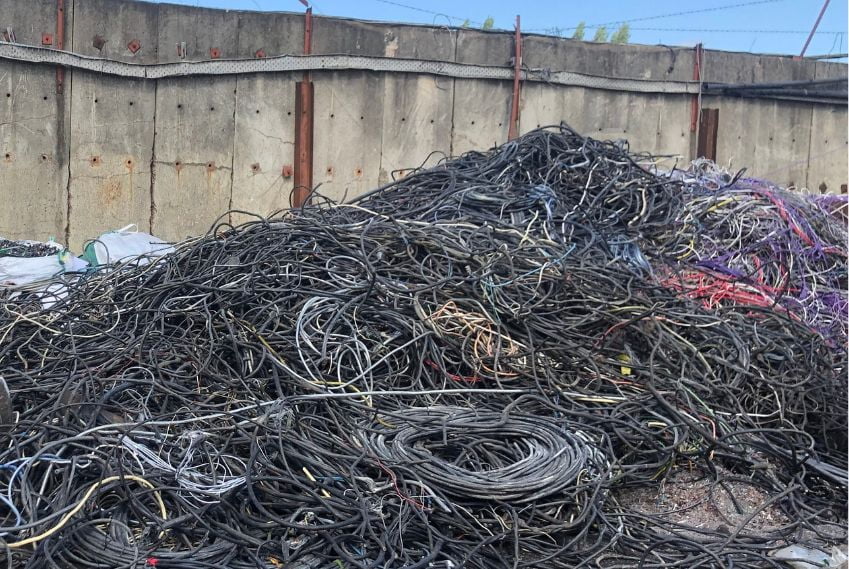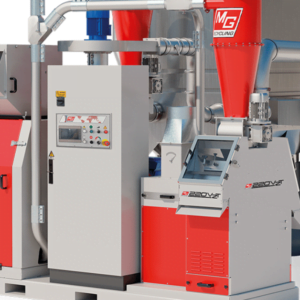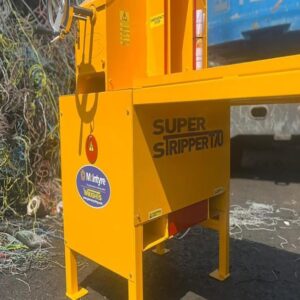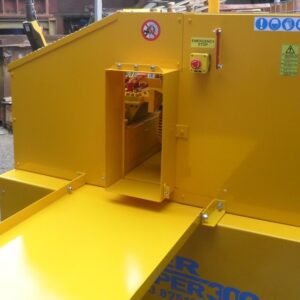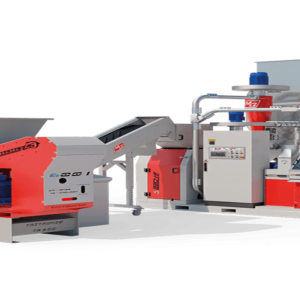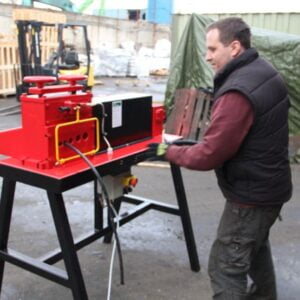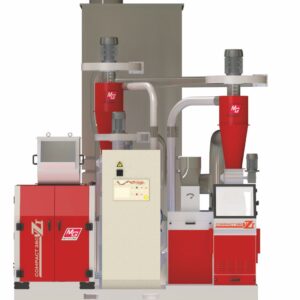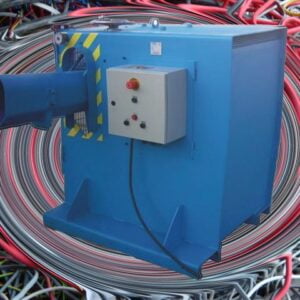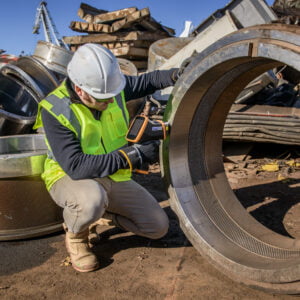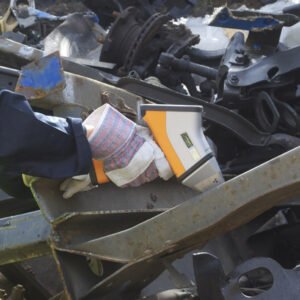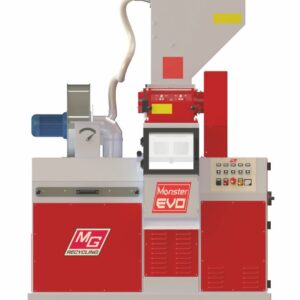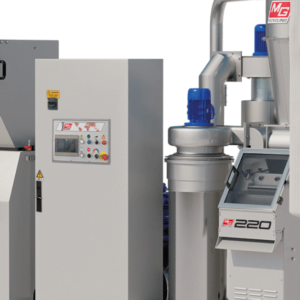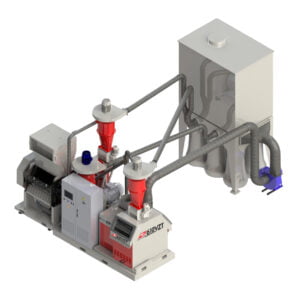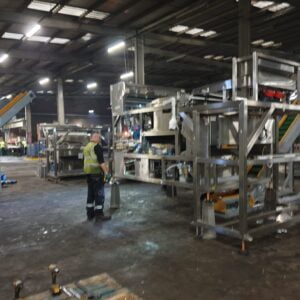At JMC Recycling, we recognise cable and WEEE (Waste Electrical and Electronic Equipment) recycling as crucial components in the drive towards environmental sustainability.
Our commitment is reflected in our deployment of cutting-edge technologies and expertise, ensuring that each item of recycled electronic waste contributes positively to the conservation of natural resources, supports the circular economy, and reduces both waste and emissions harmful to our planet.
The Recycling Process for Cables and WEEE
Recycling cables and electronic waste is a comprehensive process that plays a significant role in environmental conservation by reclaiming valuable materials and preventing harmful effects on the environment. This process is crucial for the sustainability of resources and contributes to the circular economy.
1. Collection
The initial stage involves gathering cables and electronic devices from various sources, including businesses, consumers, and electronic waste collection points. Methods of collection include designated drop-off centres, electronic waste recycling events, and collection services from electronic retailers or municipal waste services.
2. Sorting
Upon collection, the mixed electronic waste must be sorted into different categories. This sorting is essential to separate hazardous materials from recyclable components and to identify various types of metals, plastics, and other materials present in electronic waste. Advanced sorting technologies, such as our EIR Colour Sorters, play a vital role in this process.
3. Processing
After sorting, the electronic components are processed to dismantle them and prepare them for material recovery. This may involve:
Shredding: Reducing the size of electronic waste to make the separation process easier.
Dust Extraction: Removing dust and smaller particles to ensure the purity of separated materials.
Granulation: Breaking down cables and smaller parts to separate metals from insulation and other non-metallic components.
4. Material Recovery
The separated materials undergo further processing to recover precious metals (like gold, silver, and platinum), base metals (such as copper and aluminium), and other valuable materials. This stage may involve specific chemical or physical separation techniques to ensure the highest possible recovery rate.
5. Purification
Recovered metals are then purified through processes such as electrolysis or melting, which remove impurities and prepare the metals for their next use. This step is crucial for maintaining the quality and value of the recycled materials.
6. Repurposing
Finally, the recycled and purified materials are ready to be repurposed. They can be used in manufacturing new electronic components, cables, or other products.
Utilising recycled materials significantly reduces the reliance on virgin resources, lowers energy consumption, and decreases greenhouse gas emissions, reinforcing the environmental and economic benefits of cable and WEEE recycling.
Benefits of Cable & WEEE Recycling
Environmental: Cable and WEEE recycling plays a critical role in minimising our environmental footprint, significantly reducing the release of hazardous substances and greenhouse gases associated with electronic waste.
By efficiently recycling electronics and cables, we mitigate the need for new raw material extraction, thus preserving natural habitats and lowering energy demands. This responsible handling of electronic waste prevents toxic materials from polluting our ecosystems, contributing substantially to environmental protection efforts.
Economic: The economic advantages of recycling cables and electronic waste are manifold. The process not only recovers valuable materials like copper, aluminium, and precious metals, which can be reintroduced into the manufacturing cycle, but also stimulates the recycling and manufacturing industries by supplying them with cost-effective raw materials.
This recovery and repurposing of materials from electronic waste generate significant revenue, reduce manufacturing costs, and encourage the growth of green technologies and jobs, thereby fuelling economic development and innovation in recycling technologies.
Social: Beyond its environmental and economic impacts, cable and WEEE recycling generates considerable social benefits by creating diverse employment opportunities within the recycling sector.
By promoting sustainable practices and reducing the demand for virgin materials, cable and WEEE recycling contribute to building a more sustainable economy and fostering greater public awareness of the importance of electronic waste management.
Cable & WEEE Recycling Case Studies
These real-world examples highlight the effectiveness of our recycling solutions in achieving significant environmental and economic benefits, showcasing the practical applications and successes of our innovative technologies in diverse settings.
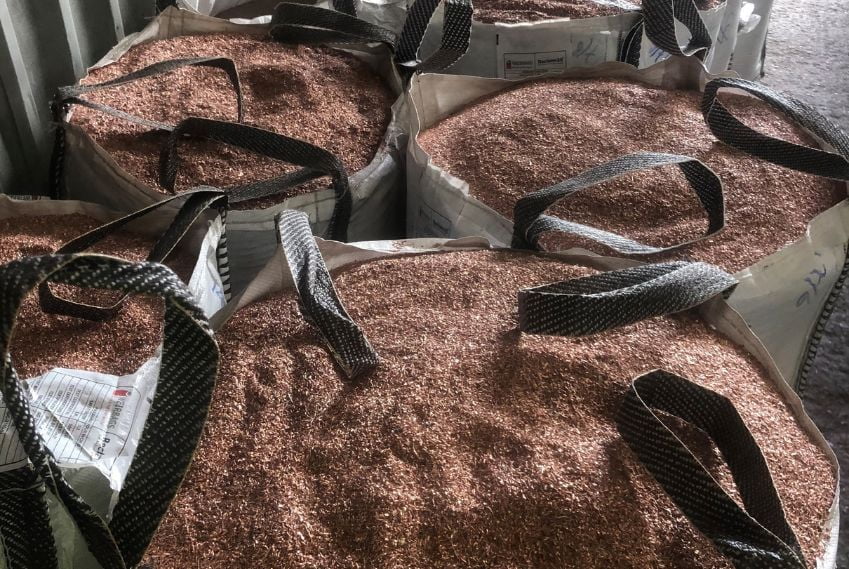
Types of Materials Recycled from Cables and WEEE
Recycling from cables and electronic waste (WEEE) encompasses a broad spectrum of materials, ranging from various metals to plastics and glass, each with its unique application and recycling process.
Metals
Metals are a primary component recovered from cables and WEEE, divided into non-ferrous and precious metals due to their extensive use and value.
Copper: Found in electrical cables and electronic components, copper is highly prized for its electrical conductivity. Its recycling is key to reducing the need for copper mining.
Aluminium: Used in various electronic casings and components, aluminium recycling saves significant energy compared to primary production.
Precious Metals: Gold, silver, and palladium, found in circuit boards and electronic components, are recovered for their high economic value and utility in manufacturing new electronic parts.
Plastics
Plastics from cables and electronic devices are recycled into new plastic products, reducing petroleum use and plastic waste in landfills.
PVC and Polyethylene: Commonly found in cable insulation, these plastics are processed and reused in various applications, including new cables and construction materials.
Glass
Glass from electronic screens and monitors is recycled into new glass products, contributing to the circular economy and reducing the need for raw materials.
Rare Earth Elements
Found in small quantities in electronics, rare earth elements are critical for the functionality of many high-tech devices. Their recovery is essential for securing a supply for future technologies.
Hazardous Materials
Including lead, mercury, and cadmium, hazardous materials require careful handling and recycling to prevent environmental contamination and harm to human health.
Recycling cables and WEEE not only conserves valuable resources but also prevents potentially hazardous substances from causing environmental damage, illustrating the importance of effective recycling technologies and practices in managing these complex waste streams.
Cable and WEEE Recycling FAQs
Curious about cable and WEEE recycling? Browse our FAQs for clear, comprehensive responses to your most pressing questions.
What types of cables and electronic waste can your equipment process?
Our recycling equipment is designed to process a wide range of cables and electronic waste, including but not limited to, household electronics, IT and telecommunications equipment, consumer goods, and electrical tools. From power cables and chargers to computers, smartphones, and large household appliances, our machinery is equipped to handle various forms of electronic scrap, ensuring efficient material recovery.
How does your technology ensure the safe handling of hazardous materials found in WEEE?
Our technology incorporates advanced safety and decontamination features specifically designed to address the challenges posed by hazardous materials in WEEE. This includes systems for safely removing and containing toxic substances such as lead, mercury, and cadmium, as well as refrigerants and batteries. Through meticulous separation and containment processes, we ensure these materials are handled and disposed of in compliance with environmental regulations, minimising risk to both operators and the environment.
Can your equipment separate metals from other materials in electronic waste?
Yes, our equipment is specifically engineered to separate metals from other materials in electronic waste with high efficiency and precision. Utilising a combination of shredding, granulating, and advanced separation technologies, our machinery can effectively isolate ferrous, non-ferrous, and precious metals. This separation allows for the recovery of valuable materials for recycling, contributing to resource conservation and the reduction of waste.
Electronic Waste Recycling Equipment
The effectiveness of cable and WEEE recycling is greatly enhanced by the use of sophisticated recycling technologies and equipment. Investment in the quality sorting technologies, granulation systems, and separation processes significantly minimises energy consumption, operational costs, and environmental footprint.
Our range of specialised machinery is designed to tackle the unique challenges presented by electronic waste and cables, ensuring the highest levels of material recovery and purity. From granulators that efficiently process cables to advanced separation technologies capable of analysing metals, our equipment is at the forefront of recycling innovation.
-

MG 220 VZT Cable Granulation System
-

Wrights Super Stripper 170 (USED)
-

Wrights Super Stripper 300
-

McIntyre 1000 Cable Stripper (USED)
-

MG 150 Cable Granulation System (USED)
-

MG 380VZT Full System (USED)
-

MG 220 VZT Full System (USED)
-

Euro-Strip 3000 Cable Stripper
-

MG 380 VZT Cable Granulator
-

MG 150 Cable Granulation System
-

Euro-Strip 10000 Cable Stripper (USED)
-

MG Monster EVO T Cable Granulator
-

MG 220 VZT Cable Granulation System
-

MG 610 VZT Cable Granulator
-

Wrights Super Stripper 170
-

Wrights Super Stripper 600
Contact Us for Your Recycling Needs
For further inquiries or to learn more about JMC Recycling’s products, contact us now. Whether you prefer a direct conversation or filling out a form, we’re here to facilitate easy communication.

